Gut skin parka

Gut skin parka today stored at the National Museum of Denmark Source: Nationalmuseum, Danmark, File ID: ES-49677, Photo: Roberto Fortuna CC BY-NC-SA 4.0 – This girl’s parka is from Eastern Greenland and was acquired by the National Museum of Denmark in 1854. Survival in the Arctic requires extremely well-made clothing. The skill of producing watertight, lightweight clothing goes […]
The Entrail Snatcher
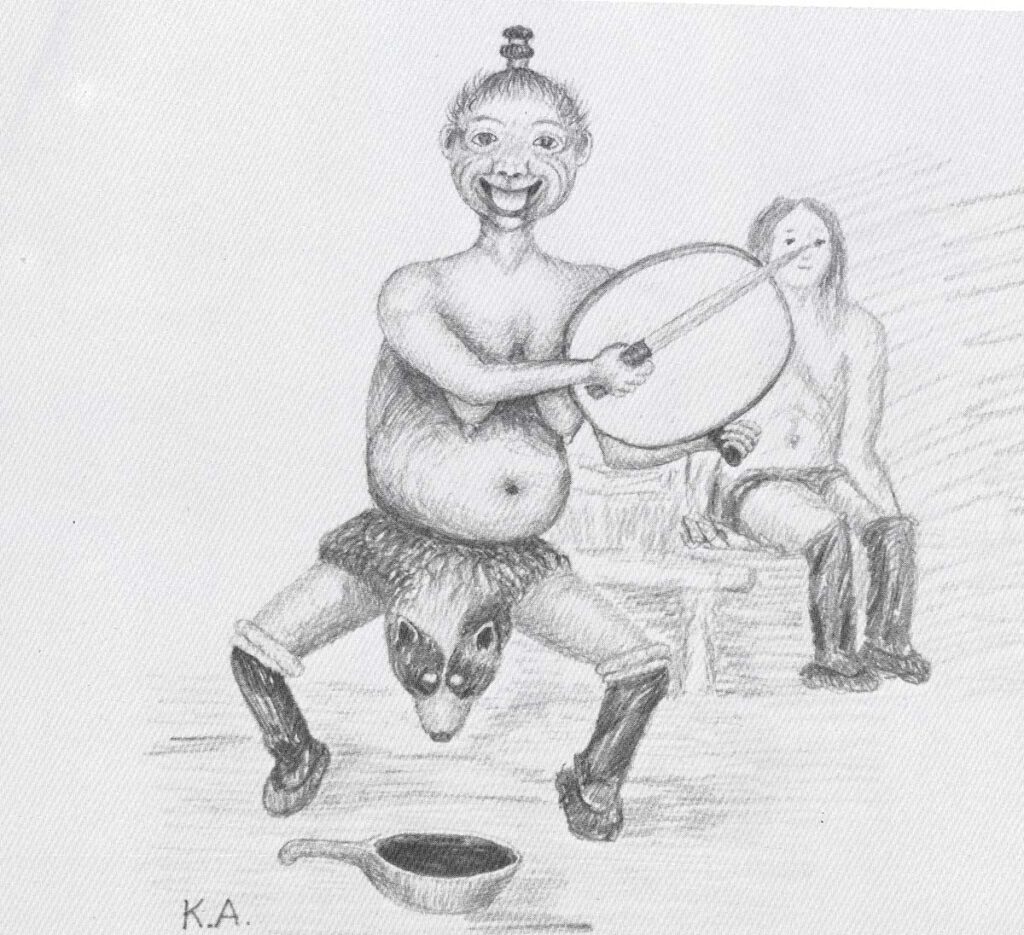
The Entrail Snatcher Drawing by Kârale Andreassen, today stored at the National Museum of Denmark. Nationalmuseet, Danmark, Photo: Jesper Kurt-Nielsen CC BY-SA 2.0 – The Entrail Snatcher or Lung eater, named Nalikkatteeq, was said to eat the lungs of the deceased humans, who passed by her on their way to the heavenly realm of death. With the […]
Traditional tupilak
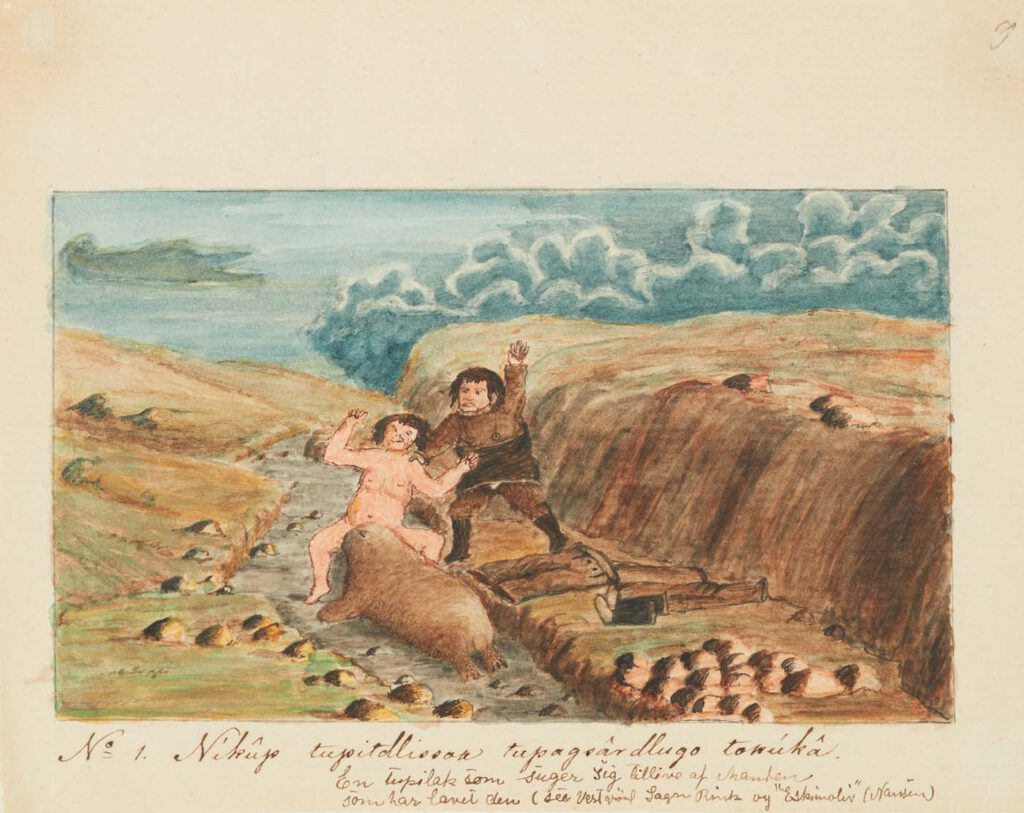
Traditional tupilak Water colour, Aron from Kangeq, Greenland, today stored in the Ethnographic Museum in Oslo (Oslo University).Photo: Alexis Pantos/©Museum of Cultural History, University of Oslo. – A tupilak was an artificially crafted object used for sorcery. It was meant to hurt the person to whom it was sent. It resembled a seal in size […]
Tupilak carving
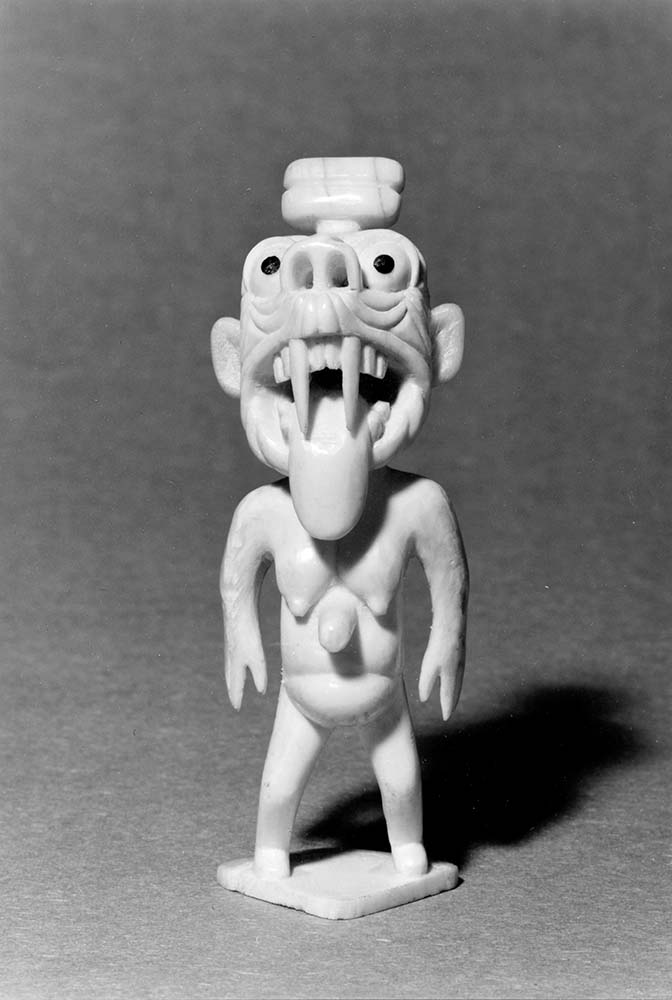
Tupilak carving Tupilak carving, ivory, Greenland. Before 1962.Photo: Ole Woldbye, Danish Arctic Institute – A tupilak, today a tourist object and awkwardly considered to have been an auspicious talisman, was an object meant to do nothing but harm. Most Tupilaks were put together by bones from various animals, stuffed with sod and wrapped up in skin, to be […]
Drawing of rock carving of an elk with numerous anatomical parts depicted
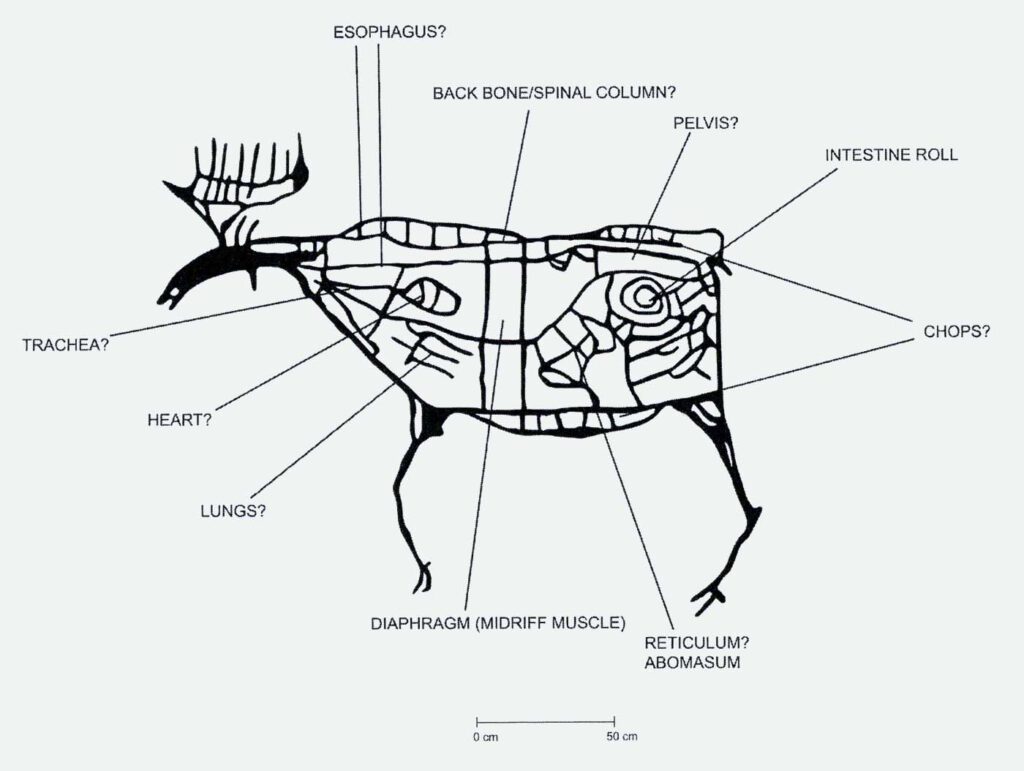
Drawing of rock carving of an elk with numerous anatomical parts depicted. Åskollen in southern Norway. From: Rock Art and the Wild Mind. Visual Imagery in Mesolithic Northern Europe. Ingrid Fuglestvedt, Copyright © 2018, London, Routledge. Figure 5.2, page 192. Reproduced by permission of Taylor & Francis Group. – A few rock carvings in southern […]
Rock carving of elk with lifeline and guts

Rock carving of elk with lifeline and guts. Alta, northern Norway. Photo: Karin Tansem, VAM, Copyright © World Heritage Rock Art Centre – Alta Museum. (CC BY-NC-SA 4.0) – Only a few of the rock art images in northern Norway display a patterning that is likely to represent guts in an unambiguous way. This male elk is […]
Slate knife with two porpoises engraved
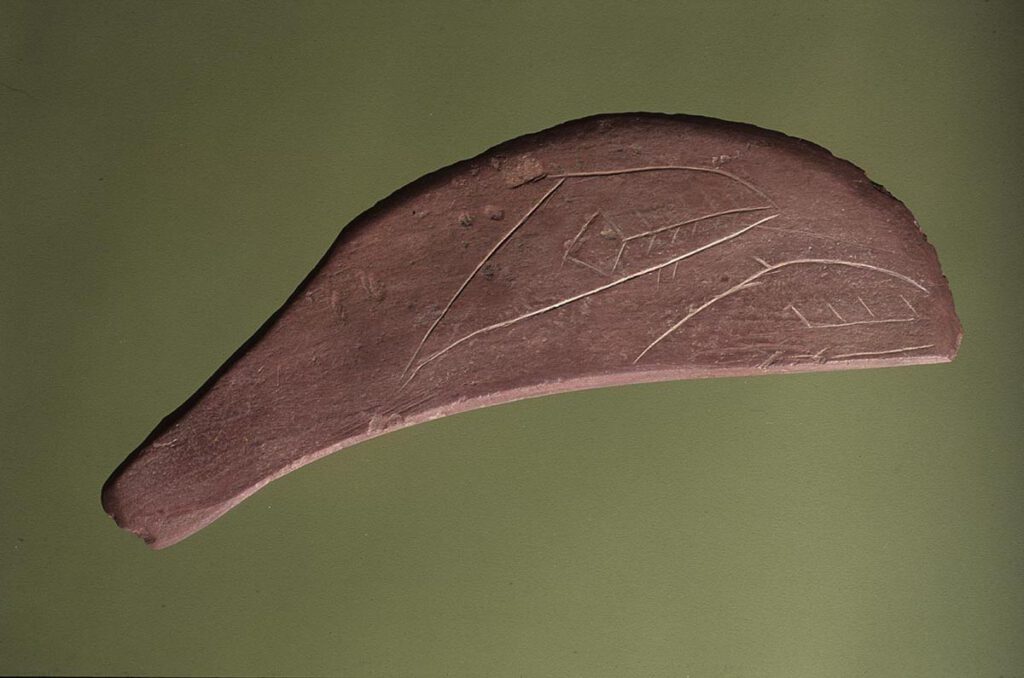
Slate knife with two porpoises engraved. Found at Teksdal, central Norway. Photo: Per E. Fredriksen, NTNU University Museum CC BY-NC-SA 4.0 – This single-edged knife of reddish-brown slate, or sandstone bears three engravings of fish or porpoises, two on one side (shown here) and one on the back. All three display the same internal patterning, a […]
Rock carving of Brown bear with lifeline
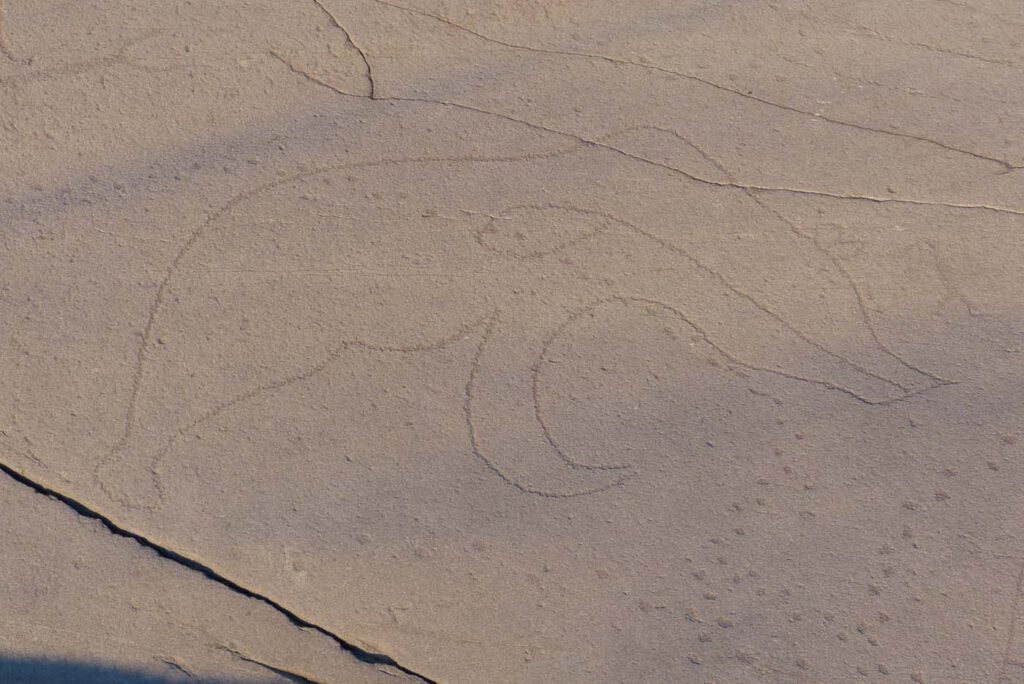
Rock carving of Brown bear with lifeline. Alta, northern Norway. Photo: Charlotte Damm – This bear, a large, more than one metre long figure, is portrayed through the outline of the animal’s profile only. The only other visible feature is a line running from the snout to an oblong circle located in the front part […]
